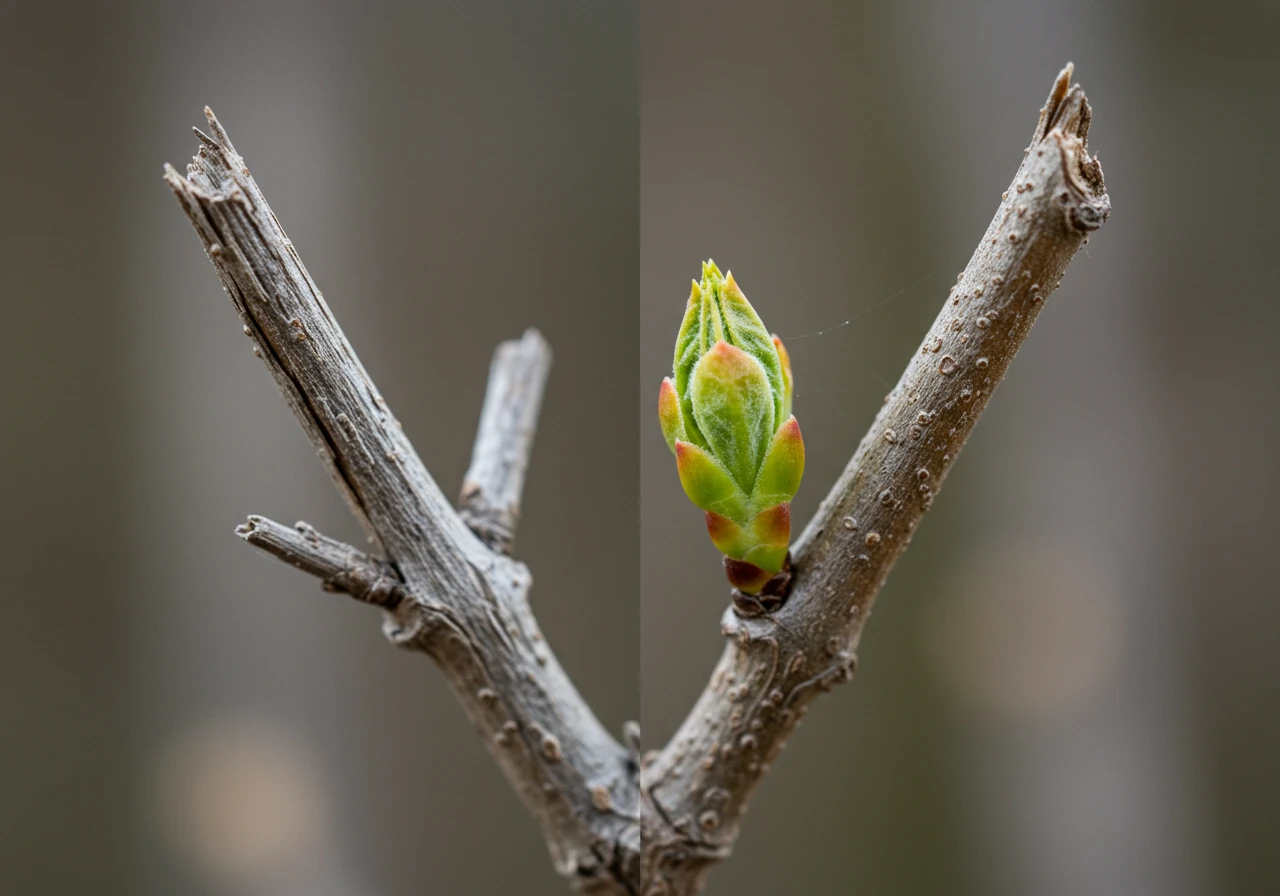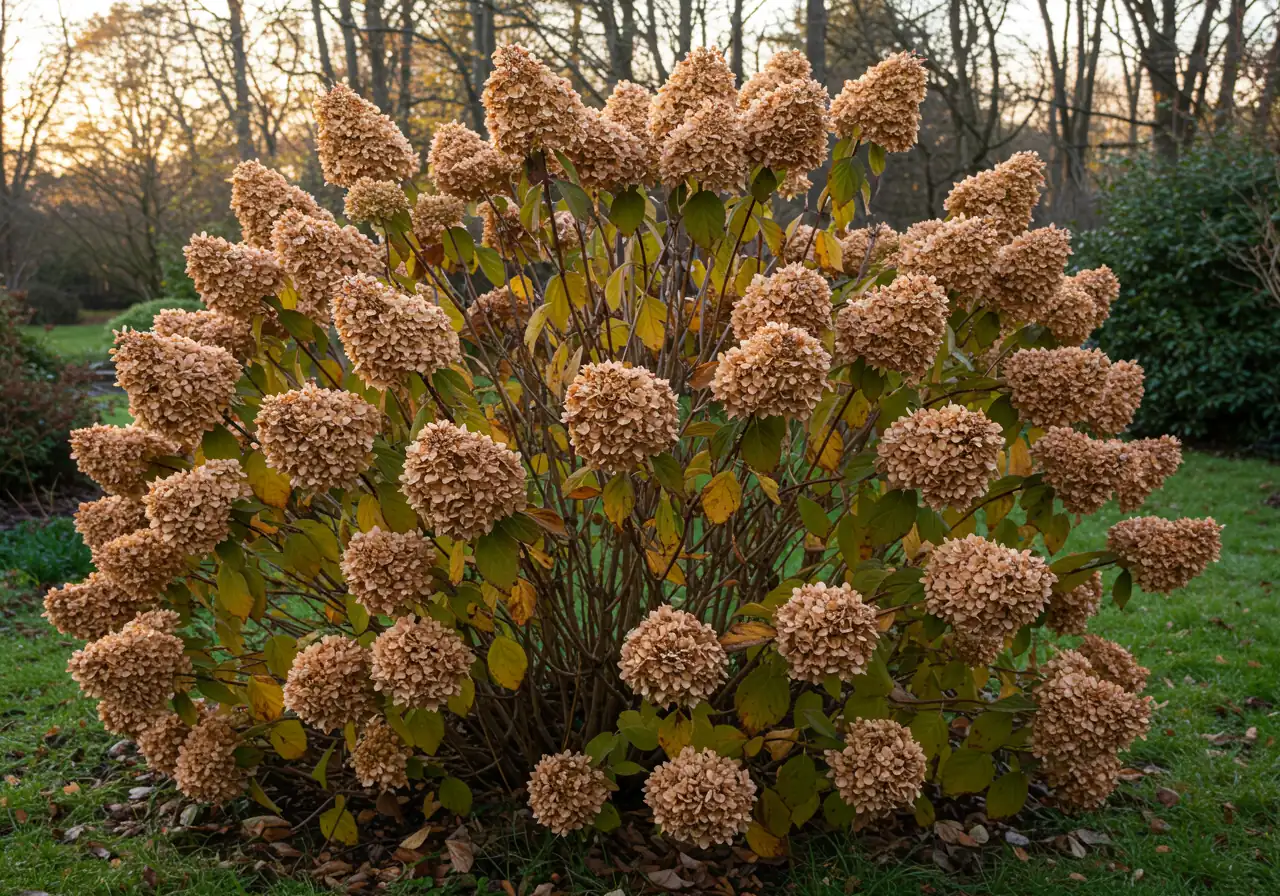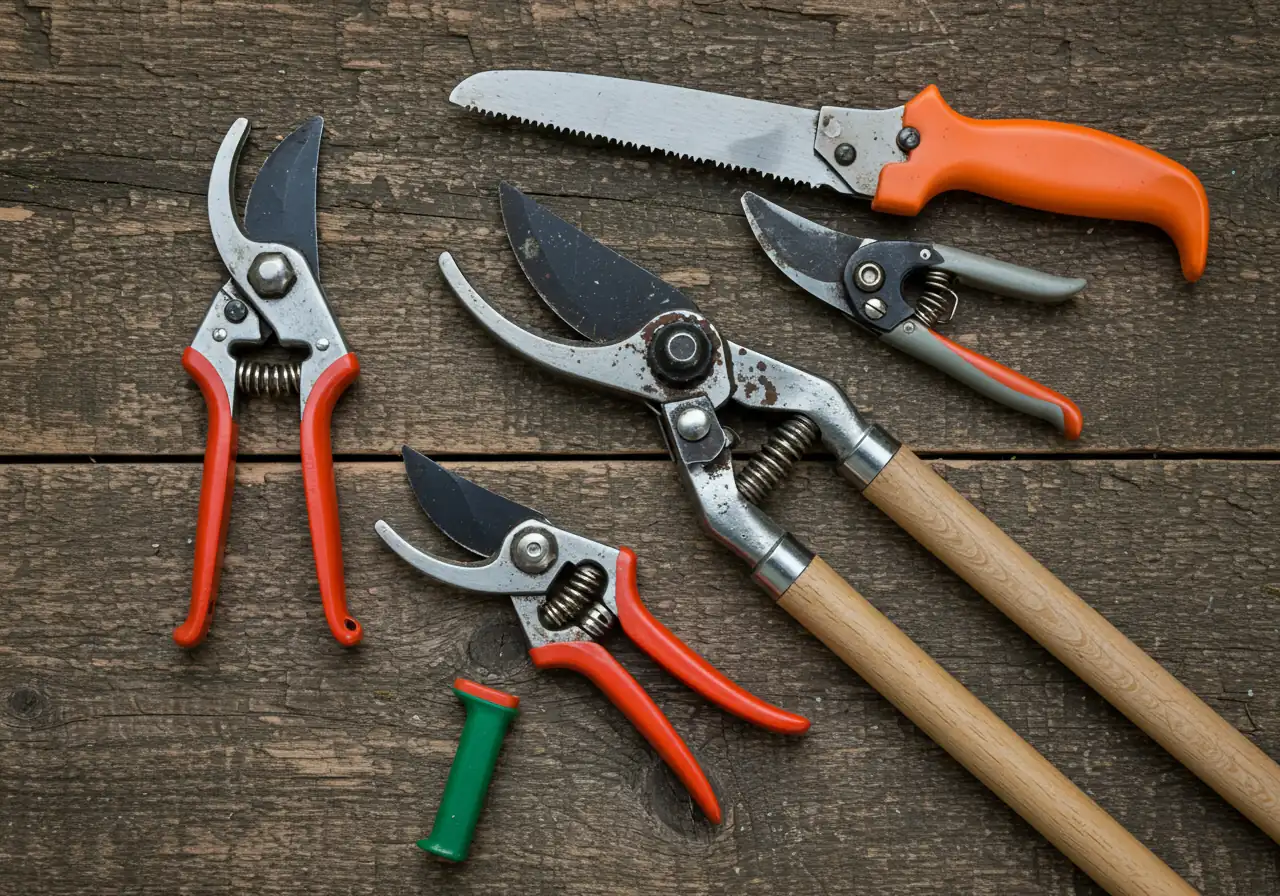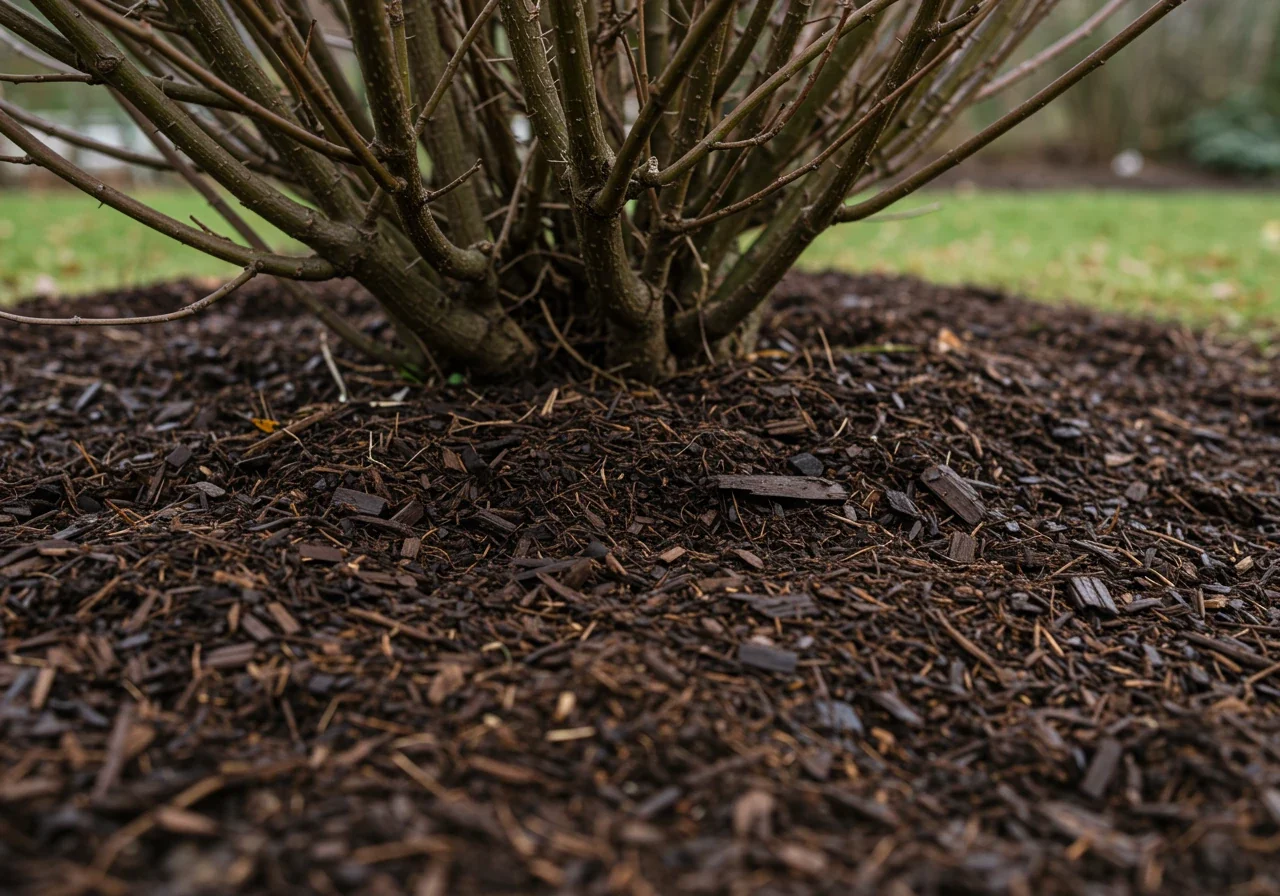Save $$ Richmond: Fall Renovation Pruning Revives Shrubs
Ready to tackle your fall pruning but want professional advice first? Request your free quote today!
Get Your Free Pruning QuoteQuick Guide to Smart Fall Pruning in Richmond:
- Wait for Dormancy: Only prune leafy shrubs after leaves drop and hard frosts hit (late Oct/Nov in Ottawa).
- Focus on Health: Prioritize removing Dead, Damaged, and Diseased (3Ds) wood.
- Know Bloom Time: Avoid heavy pruning on spring bloomers (lilacs, forsythia) in fall.
- Renovate Wisely: Severely overgrown shrubs might need drastic cuts, best done when dormant.
- Winter Prep: Mulch after pruning to protect roots.
- Save Money: Proper pruning prevents winter damage and costly replacements.
Introduction: Give Your Shrubs (and Wallet!) a Break This Fall in Richmond
Hey Richmond neighbours! Fall's stunning colours are here, aren't they glorious? As the air gets that familiar crisp feeling across the greater Ottawa area, you might feel the pull to get *everything* perfectly tidy in the garden before winter hits. But wait! Before you get too ambitious with the pruning shears on your favourite shrubs, let's talk strategy. Believe it or not, giving your shrubs – and yes, your wallet! – a bit of a calculated break this fall can be the *smartest* move.
Overdoing certain tasks now can actually harm your plants. Proper fall care is crucial landscaping wisdom; it's about setting your shrubs up to survive our tough winters and thrive next spring, potentially saving you cash on replacing stressed or damaged plants. Smart gardening isn't always about doing *more* work; sometimes it's about knowing when to ease up. Whether you're tending your garden here in Richmond, or enjoying the season in nearby Manotick or Greely, knowing *what* to do (and what *not* to do) for winter preparation is key. Ready for some down-to-earth, practical advice for happy shrubs and a happier budget? Let's get started!
Why Prune in the Fall? Timing is Everything in the Ottawa Valley

Alright, let's chat about fall pruning here in the Ottawa Valley. You might be itching to tidy everything up before the snow flies – we get it! But when it comes to pruning shrubs and trees, grabbing those shears at the wrong moment can do more harm than good, especially with our frosty winters looming. Think of it like getting a haircut; timing and technique matter! Mess it up, and you (or your plant) might regret it come spring.
So, why *would* we prune in the fall? Isn't spring the big pruning season? Well, yes and no. Fall isn't typically the time for major reshaping, but it *is* the perfect opportunity for a crucial health check-up and cleanup *after* your plants have gone dormant.
Here’s the deal:
- Health Check: The main goal of fall pruning is removing the "three Ds" – Dead, Damaged, and Diseased wood. Cutting these bits out *now* prevents problems like diseases or pests from overwintering and spreading. It also improves air circulation through the plant. This isn't the same goal as shaping discussed in Richmond Summer Shrub Pruning Tips for Healthy Gardens; fall is more about targeted removal for health.
- Winter Readiness: Weak, broken, or awkwardly crossing branches are prime candidates for snapping under heavy Ottawa snow and ice. We see this happen across the city, from Nepean right out to Osgoode. A little preventative pruning now can save branches (and potentially the whole plant) from serious winter injury. Less damage means less stress on the plant and less replacement cost for you!
- Aesthetic Tidy-Up: Removing the obvious deadwood just makes things look neater heading into the stark winter landscape. It’s a small detail that contributes to the bigger picture, much like considering overall Richmond Landscape Design Ideas & Plans.
The Golden Rule: Wait for Dormancy!
This is the *most important* part. You absolutely MUST wait until your deciduous shrubs and trees (the ones that lose their leaves) are fully dormant. This usually happens after we’ve had several hard frosts and the leaves have dropped. Why wait? Pruning too early, while the plant is still actively growing, can signal it to produce *new* growth. That tender new growth stands no chance against an Ottawa winter freeze-up and wastes the plant's energy reserves. Think of it like this: you wouldn't start major outdoor projects just as a blizzard is forecast, right? Plants need to be fully "shut down" for winter before you start snipping. Need help planning your garden structure? Check our Richmond Tree Planting Tips for Healthy Growth.
While you're planning your fall cleanup, remember pruning is just one piece of the puzzle. It’s a different task entirely than dealing with leftover Richmond Lawn Weeds: Summer Control Tips. Focus fall pruning on health and safety *after dormancy*.
Unsure about what needs pruning or exactly when to do it? Sometimes, calling in the pros is the easiest way to ensure it's done right. Many professional landscapers offer fall cleanup that includes appropriate pruning assessments as part of Our Comprehensive Landscaping Services. Specifically, services like our Richmond Yard Cleanup Service can tackle this task, ensuring your plants are healthy and ready for winter's challenges. Getting the timing right makes all the difference for a vibrant return in the spring!
Fall Pruning Process Timeline
Late Summer/Early Fall
Monitor shrubs. Avoid heavy pruning. Identify potential candidates for later removal (dead/damaged wood).
Mid-Fall (After Leaf Drop)
Wait for several hard frosts. Check for dormancy (limp stems, no active growth).
Late Fall (Dormancy Confirmed)
Prime time! Prune dead, damaged, diseased wood. Perform necessary renovation pruning on appropriate shrubs.
Post-Pruning
Clean up debris. Apply mulch around the base for winter protection. Water deeply before ground freeze if dry.
Winter
Relax! Let shrubs rest. Protect sensitive plants with burlap if needed. Monitor for heavy snow/ice damage.
Not All Shrubs Are Created Equal: Identifying Candidates for a Fall Facelift

Okay, folks, let's get down to the nitty-gritty. You've got your pruning shears ready, maybe a nice cup of tea, and you're eyeing that unruly shrubbery. But hold your horses! Just like you wouldn't give everyone the same haircut (imagine your neighbour Bob with a mohawk!), you can't prune every shrub the same way in the fall, especially here in the Ottawa region. Getting it wrong can mean fewer flowers next year, or even a stressed-out plant. So, let's figure out which shrubs are saying "Yes, please!" to a fall trim and which are screaming "Stop! Wait 'til spring!"
Good Candidates for Fall Pruning (After Dormancy)
These shrubs typically bloom on *new wood* (growth from the upcoming season):
- Panicle Hydrangeas (Hydrangea paniculata): 'Limelight', 'Pinky Winky', etc. Cut back to shape and remove old blooms.
- Smooth Hydrangeas (Hydrangea arborescens): 'Annabelle'. Can be cut back significantly.
- Potentilla: Tidy up by removing some older stems.
- Some Spireas: Japanese Spirea types ('Goldflame', 'Little Princess').
- Overgrown Hardy Shrubs (Renovation): May include old Dogwoods, some Spireas needing a reset.
For major rejuvenation projects, see examples in our Landscaping Project Transformations Gallery.
Wait to Prune (Avoid Heavy Fall Cuts)
These shrubs bloom on *old wood* (last year's growth). Pruning heavily in fall removes next year's flower buds:
- Lilacs: Prune right *after* flowering in spring.
- Forsythia: Prune right *after* flowering in spring.
- Weigela: Prune after flowering in late spring/early summer.
- Rhododendrons & Azaleas: Minimal pruning, usually after flowering.
- Most Viburnums: Check specific type, but generally prune after flowering.
Confused about your shrub type? A City Garden Maintenance Service can help identify and schedule proper care.
Always Okay to Prune (When Dormant)
Basic plant hygiene applies to almost *any* shrub once dormant:
- Dead Wood: Brittle, no signs of life.
- Damaged Wood: Broken, cracked, or rubbing branches.
- Diseased Wood: Discoloured, cankers, signs of fungal growth.
Removing these improves plant health and prevents winter issues. This type of cleanup is often part of a City Garden Clean Up Service.
What About Seriously Overgrown Shrubs?
Sometimes a shrub is just a tangled mess. These might need more drastic "renovation pruning." Fall *can* be a time for this on *some* deciduous shrubs (like old spireas or dogwoods), but it often involves removing a lot of wood. If you're facing a beast like this, getting professional advice might be wise. Consistent attention via a regular garden maintenance plan can prevent shrubs from getting out of hand in the first place.
Remember, removing dead or severely overgrown shrubs might leave gaps. This could be the perfect opportunity to improve the surrounding area next spring, perhaps even thinking about professional sod installation services if the lawn nearby needs help too.
Making smart choices now about which shrubs to prune really pays off. If you're in Richmond and need a hand sorting it all out or doing the actual cleanup, our Richmond Yard Cleanup Service team is ready to help. Your future self will appreciate the healthy, blooming shrubs next spring – it's the kind of satisfaction we love seeing on our Client Appreciation and Project Gallery page!
Get Snippy With It: Your Step-by-Step Guide to Renovation Pruning

Alright, let's talk about those shrubs that have gone from "pleasantly full" to "wild jungle beast" mode. Sometimes, a simple trim just won't cut it. Enter *renovation pruning* – the ultimate reset button for seriously overgrown, tired, or neglected deciduous shrubs (the ones that lose their leaves). It sounds drastic, maybe even a little scary, but it can breathe new life into old plants. Think of it as tough love for your tangled greenery!
While the absolute *best* time for this major haircut is usually late winter or very early spring (just before new growth starts but after the worst Ottawa cold), some super hardy shrubs might tolerate it in *late* fall *after* they are completely dormant. If you're unsure, late winter/early spring is the safer bet.
Ready to play shrub surgeon? Here’s your step-by-step guide:
Step 1: Gear Up for Safety and Success
First things first: safety! Grab sturdy gardening gloves (those old stems can be scratchy) and eye protection. You only get one pair of eyes! Next, assemble your tools. You'll need sharp, *clean* bypass pruners for smaller stems, loppers for medium branches (up to an inch or so), and possibly a pruning saw for the thick old trunks. *Clean tools are non-negotiable* – wipe them down with rubbing alcohol between cuts, especially if you suspect disease, to avoid spreading problems.
Step 2: Assess Your Patient
Take a good look. Is this shrub a good candidate? We're usually talking about deciduous shrubs known for vigorous growth from the base, like overgrown lilacs, dogwoods, potentilla, or spireas often seen in established Nepean landscapes. If it's mostly dead wood or just looking sad and leggy, renovation might be the answer. You generally have two choices: the 'all-at-once' chop (most common) or a 'gradual' renewal (removing 1/3 of the oldest stems each year for 3 years – less shocking, but slower results). We'll focus on the 'all-at-once' method here.
Step 3: Make the Cut(s)!
Take a deep breath – here we go! Using your loppers or pruning saw, cut *all* the stems back to about 6-12 inches from the ground. Yes, really! It feels harsh, but cutting them back this hard forces the plant to send up strong, new, vigorous shoots from its base or roots. Aim for clean cuts, not ragged tears. Don't be shy; this is the "renovation" part!
Step 4: Tidy Up and Plan for Aftercare
Wow, that probably created a *lot* of branches, didn't it? Removing all that debris is a big job. If you're staring at a mountain of clippings taller than your garden gnome, calling in help like an Ottawa Yard Cleanup Service or even a specialized City Property Clean Up Service can save your back. Folks on larger lots, perhaps out towards Marionville, might find the Marionville Yard Cleanup Service particularly useful for big renovation projects. Our team can also help with preparing soil for next season through soil preparation services.
Once the area is clear, think about next spring. When the ground warms up, give the shrub's base a good watering and consider adding a layer of compost and mulch. Need help choosing the right mulch or soil? We can guide you on that. Keep the area weed-free as the new growth emerges.
Step 5: Patience and Future Tweaks
Your shrub will look... well, like a collection of stumps for a while. Have faith! Come spring, you should see lots of fresh new growth. Let it grow freely for the first season. The following year, you might want to thin out the weakest new stems to encourage the strongest ones and improve air circulation. The bare patch left behind might also highlight surrounding lawn issues; sometimes, professional sod installation services are needed the following spring to fully refresh the area.
Renovation pruning looks dramatic, but for the right shrub at the right time, it’s a fantastic way to rejuvenate your landscape. Consistent upkeep through regular garden maintenance can often prevent shrubs from getting so overgrown in the first place, saving you from needing such drastic measures down the road. But when needed, get snippy with confidence!
Common Fall Pruning Needs (Example)
Different shrubs have varying needs. Here's a hypothetical breakdown of common fall pruning tasks for a typical Richmond yard:
(Note: Chart shows example percentages of shrubs requiring each type of fall care.)
After the Cut: TLC for Your Revived Shrubs (Ottawa Winter Prep!)

Phew! You did it. The pruning shears are put away, and your shrubs have had their fall tune-up (or maybe even a full-on renovation haircut!). But don't head inside just yet – a little post-pruning Tender Loving Care now will make *all* the difference when spring finally rolls around after our tough Ottawa winter. Think of this as tucking your plants into bed properly.
First up, watering. Even though the weather is cooling, your shrubs (especially evergreens or those that got a significant trim) might appreciate one last deep drink *before* the ground freezes solid. If we haven’t had much rain, give the soil around their base a good soaking. This helps hydrate the roots for the long, dry winter ahead. For more info check out Ottawa Horticultural Society Resources.
Next, let’s talk mulch. Applying a fresh layer of mulch (about 2-4 inches deep, keeping it away from the base stems) after pruning is like giving your shrubs a cozy winter blanket. It insulates the soil, prevents moisture loss, and stops those annoying freeze-thaw cycles that can heave plants right out of the ground – something we definitely see in areas like Metcalfe. Wood chips or shredded bark work great. Need help selecting the best option? We have tips on choosing the right materials for winter protection. Applying it correctly is key; check out our guide to proper mulching techniques.
For shrubs that might be borderline hardy here, or those feeling a bit exposed after a major renovation pruning, consider some extra winter armour. Young plants or broadleaf evergreens might benefit from a burlap screen or wrap, especially in windy spots like Kars, to protect them from harsh winds and winter sun scald. Remember, snow is actually a great insulator, so don't rush to knock heavy snow *off* sturdy shrubs unless the branches are really straining. Learn about Ottawa's climate from The Weather Network - Ottawa.
Now, what about that pile of pruned branches? Don't just leave it sitting there! For manageable amounts, chop them up and they can go right into your City of Ottawa Green Bin. For bigger jobs, especially after renovation pruning, hauling it away can be a chore. A reliable city yard cleanup service can handle the debris efficiently. Folks with larger properties might even need help from a Marionville garden clean up service or a local Metcalfe property cleanup service to clear the cuttings. Even neighbouring areas like Marionville might need similar support via Marionville property cleanup.
Taking these steps now ensures your pruned shrubs have the best possible chance to bounce back beautifully next spring, maybe even leaving you space for planning future garden installations! Sweet dreams, little shrubs! Consider looking at our work in nearby Ottawa Property Cleanup Service areas.
Highlight Box: Fall Pruning Fast Facts for Savvy Richmond Gardeners
- Timing is Everything (Seriously!): Patience, pal! Wait until your leafy shrubs are fully dormant (after leaves drop and we've had several hard frosts) before doing any *major* fall pruning here in the Ottawa area. Pruning too early stimulates growth that our chilly winters will zap, wasting the plant's precious energy. Getting the timing right is key for a vibrant spring comeback.
- Fall Focus = Health Check: Think "clean-up crew," not "extreme makeover." Your main goal now is snipping out the dead, damaged, or diseased wood (the "three Ds"). This simple step prevents pests and diseases from bunking down for the winter in your shrubs. Big reshaping jobs? Save those for late winter or spring! Need help spotting the bad branches during your cleanup? Expert eyes, like those involved in a thorough Metcalf garden clean up service, can make all the difference.
- Know Your Bloom Time: Hold those shears! Remember, some popular shrubs (like lilacs and forsythia) bloom on *last year's* branches (old wood). Prune them heavily now, and you can kiss next spring's colourful show goodbye! Others (like many hydrangeas and potentilla) bloom on the *new* growth they'll put out next year, making them generally safer candidates for a fall tidy-up *after* dormancy. Not sure which is which in your Richmond yard? Better safe than sorry!
- Clean Up & Tuck In: Pruning can create quite the pile of branches. Don't leave that debris lying around attracting pests! Dealing with a mountain of cuttings, especially after tackling bigger jobs? Sometimes calling for professional property clean up is the easiest way to handle the mess. Once tidy, apply a cozy layer of mulch around the base of your shrubs (but *not* touching the stems!) to protect those roots over the winter. This finishing touch is often part of a comprehensive Metcalf property cleanup service.
- Don't Guess, Get Guidance: Feeling unsure about the right time, the right technique, or even which shrub needs what? Hey, it happens! Making the wrong cut can seriously stress or even harm your plants. Getting expert advice *before* you prune is smart gardening *and* helps your budget by avoiding costly replacements later. Why not contact us if you have questions? We're happy to offer guidance, and you can even see what your neighbours think via our estimate feedback page. Happy pruning! Visit us on Google!
FAQs: Your Burning Questions About Fall Pruning in Ottawa Answered
Great question! Generally, wait until *after* the leaves have fallen from deciduous shrubs and we've had several hard frosts (think temperatures consistently dipping below -4°C overnight). This usually pushes us into late October or November in the Ottawa Valley. Look for limp, unresponsive stems – that’s your cue the plant has shut down for winter and it's safer to make your cuts.
Don't panic! Pruning too early might encourage weak growth that winter could damage. If this happens, just tidy up any winter-killed tips in the spring. If you missed the fall window, no biggie for most shrubs! You can prune dead/damaged wood anytime, and most other pruning (especially for spring bloomers or major reshaping) is often best left for late winter or early spring anyway.
Tread carefully here! While you can remove dead or broken branches from evergreens anytime, avoid *heavy* shearing or pruning of cedars, junipers, yews, etc., in the fall in Ottawa. They need their foliage for winter protection. A very light shaping in late summer/early fall is sometimes okay, but major cuts should wait until spring *before* new growth starts.
Ottawa's Green Bin program is great for smaller amounts – just cut branches to fit! For big piles, especially after renovation pruning common in established areas like Barrhaven or Greely, hauling it yourself is tough. Consider hiring an expert Ottawa garden clean up service to handle the debris removal efficiently, especially if you're in areas needing dedicated support like a Metcalf yard cleanup service.
Hold off on the fertilizer! Fall isn't the time to encourage new growth with fertilizer, as it won't harden off before winter hits. Shrubs generally need less feeding than lawns, so unlike lawn care fertilization schedules, focus on healthy soil and mulch for shrubs in autumn. Save any potential feeding for the spring when the plant is actively growing again.
That's smart! Making the wrong cut can harm your plants. Getting professional advice is often worth it. A reputable local landscaping company can assess your specific shrubs and garden situation. You can learn more about our approach and team to see if we're a good fit. Rest assured, when you contact us for help, we respect your information as detailed in our privacy policy. Read our Terms and Conditions.
Conclusion: Healthier Shrubs, Happier Wallet – Get Ready for Spring!
So there you have it! Taking a thoughtful approach to fall shrub care in the Ottawa area isn't just about making things look tidy; it's a savvy investment in the future health of your garden *and* your budget. By knowing *when* to prune (hello, dormancy!), focusing on health over drastic reshaping in the fall, understanding which shrubs need what, and giving them proper winter prep like mulching, you're preventing winter damage and avoiding the cost and hassle of replacing stressed plants next year. Imagine your Richmond garden, or your lovely landscape in Manotick or Metcalfe, bouncing back stronger than ever!
Smart fall landscaping means healthier shrubs that are ready to impress come springtime, saving you money and future headaches. It’s a win-win! Ready to ensure your shrubs get the *right* care this fall but feeling a bit unsure where to start?
- Get Expert Eyes on Your Yard: Request your free, no-obligation quote and shrub assessment. We'll help you figure out exactly what your plants need (or *don't* need!) before winter hits.
- Need a Quick Reminder? Download our handy "Fall Shrub Care Checklist" [Link to downloadable resource - *placeholder for actual link*] to keep these tips at your fingertips.
Taking these steps now lets you kick back and relax this winter, dreaming of spring blooms. We look forward to seeing beautiful, healthy landscapes thriving all across Ottawa next year! Explore our range of services for year-round care.

